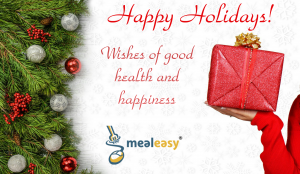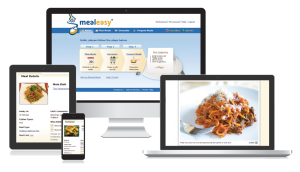Archive for the ‘Blog’ Category
Reversing High Blood Pressure / Hypertension With The Food We Eat
October 14 2019
Healthcare organizations are increasing their focus on the importance of the general public understanding the risks associated with high blood pressure / hypertension and the resulting health issues.
One out of three people have high blood pressure (hypertension) and it’s a primary risk factor for stroke or heart attack. Each year in the USA 795,000 people suffer a stroke, 600,000 are first time attacks. High blood pressure is considered to be the most important easily treatable risk factor for stroke!
Altering our lifestyle including what we eat is critical to preventing hypertension or high blood pressure.

How Can You Prevent Strokes?
Here are a few tips that can help:
- See your doctor for regular checkups.
- If you want to be more proactive, check your blood pressure periodically yourself. See your doctor if you notice any changes.
- Follow a low sodium healthy diet with lots of fruits and vegetables, similar to the commonly recommended DASH diet. Or even easier, consider MealEasy’s Heart Healthy Meal Plan.
- Reduce your sugar intake. New studies suggest sugar intake may be more of a risk factor than salt in contributing to high blood pressure.
- Ensure to keep active daily.
What you eat is vitally important to preventing and possibly reversing high blood pressure and hypertension. For a helping hand consider signing up for the MealEasy Heart Healthy Meal Plan.
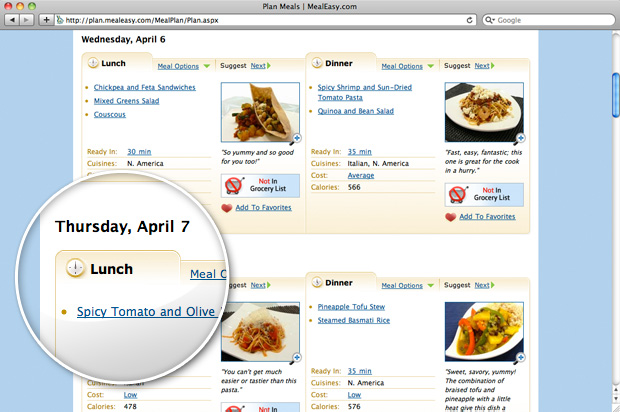
MealEasy gives you control over the food you eat. It provides easy to prepare delicious meals that can improve your overall health with each tasty bite, providing hundreds of chef designed heart healthy meals to choose from.
Diets by definition are temporary, and more often than not they fail. Making your own fresh home-made delicious meals with the help of a proven plan, you’re guaranteed to improve your health and well-being.
Using MealEasy you’ll also save significant money vs eating out, or prepackaged meals. Plus, you’ll gain the knowledge to make a better life for yourself and pass it on to generations to come.

Renew Yourself This Spring!
April 04 2019
 Spring has sprung and you can probably feel it in the air already. It’s a time of renewal and rejuvenation that is most evident with newly blooming flowers and trees all around us.
Spring has sprung and you can probably feel it in the air already. It’s a time of renewal and rejuvenation that is most evident with newly blooming flowers and trees all around us.
With all the lovely sites and smells it reminds many of us it’s a time for renewal. Whether it is gardening or spring cleaning in and around the house.
You may not think about yourself and your own body, however, spring is the perfect time to start improving our own health and wellbeing!
Renewal Starts With What You Eat
If you want to renew your body there is no better way then starting to eat better. Most of us have trouble doing that, and is the reason we created MealEasy® to begin with to help you plan healthy make at home meals easily.
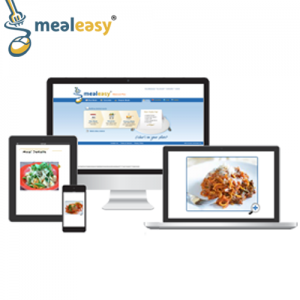 Making simple changes to what you eat, you can potentially make dramatic improvements in your health.
Making simple changes to what you eat, you can potentially make dramatic improvements in your health.
Adding more delicious home-made meals is the ideal way to do it because your using the healthiest ingredients and know what you are eating down to the ingredient level.
… And you don’t need to diet to get yourself on the right track. Start by making small changes and keep at it day by day.
A Helping Hand
For a hand along the way, consider letting MealEasy be your guide. With a wide selection of delicious meals you can make at home quick and easily. It’s a uniquely smart way to start heading in the right direction.
Treat Your Heart
February 11 2019
 This month of February is known as the month of the heart, weather it’s symbolized as Valentine’s or a general reminder from the Heart and Stroke organizations, it’s worth taking a moment to think about your own heart’s health.
This month of February is known as the month of the heart, weather it’s symbolized as Valentine’s or a general reminder from the Heart and Stroke organizations, it’s worth taking a moment to think about your own heart’s health.
You may be unaware that heart disease is the #1 cause of death world wide and that 1 in 4 lives are cut short in the USA due to it every year!
The good news is it’s entirely preventable, by changing our lifestyle including in large part due to what we choose to eat!
For a jump start in improving your overall health or the health of your family, check out our Heart Health Meal Plan, that will help treat your heart to better health one delicious bite at a time.
Happy New Year!
December 31 2018
Wishing you and yours a Happy New Year filled with good health and happiness!
From all of us at MealEasy
Happy Holidays To All!
December 22 2018
Wishing you all a happy holiday season, filled with good health and joy!
From our MealEasy family to yours.
A Smarter Alternative to Make-At-Home Meal Kits
October 08 2018

By now you have probably heard of the concept of meal kits… Having portioned ingredients delivered to your door, along with accompanying recipes to help make it easier to make “fresh” quick dinners at home. Popular meal kit services include Blue Apron and HelloFresh and have no doubt helped in making smarter food choices, while reducing the overall effort to produce the meal.
While this is great, the convenience does come at a price (monetary cost and your health) that needs to be considered and we invite you to consider a better alternative, our healthy meal planning service MealEasy.
Why It’s Better
Here are just a few reasons:
- The cost is significantly less. You’ll save hundreds vs meal kits.
- Ingredients are fresher and bought locally.
- It’s customized to your precise likes and dislikes.
- You have total control of the meals you wish to eat.
- Each meal has been designed to be quick to prepare.
- You don’t need to wait for ingredients to be delivered.
- You can use it any time you wish.
- Plan your lunches too.
- Helps improve overall health including losing weight or other health conditions.
- Delicious selection of over 2000 meals!
Even if you use a meal kit service like HelloFresh, BlueApron or others, consider adding MealEasy as a useful tool to plan and help make dinner prep easier, while experiencing new healthy meals at the same time.
Join thousands of others today and start something smart!
Is Your Diet Full Of Deadly Toxins – Part 2
August 12 2018
In our last blog post, we discussed the effects of a variety of toxins that are present in the foods you regularly eat. These toxins include pesticides, harmful bacteria and heavy metals. In this post, we’ll discuss some other toxins you likely don’t realize are jeopardizing your overall health.
Below are additional toxins in your food to pay close attention to, if you want to stay as healthy as possible. Though it’s a longer post to read, taking the time to read it is definitely worth it! You’ll be surprised by what’s in your food supply and learn how to avoid these potentially deadly toxins!
Hormones And Antibiotics
The use of hormones and antibiotics in our meat and milk supply are additional controversial concerns that are good to be aware of. Meats produced at mass scale are generally subject to the use of hormones and antibiotics to maximize production. These foods are generally tested by manufacturers and stated to be safe to eat.
In Canada growth hormones are approved only for use in beef production to produce leaner meats. Whereas in the USA, a wider range of hormones are in use, including rGBH hormones for increased milk production.
Long story short, the use of hormones is surrounded by controversy, with suspicion that it does possibly affect human health in negative ways (e.g. possibly raising insulin-like growth factor (IGF) levels once consumed; which are associated with higher risks of breast, prostate and other cancers). Estrogen hormones are another controversial subject and are routinely added to beef and linked to possible early puberty in woman. Though the cause is still not definitively known, many believe that estrogens in meat and milk byproducts do play a roll as being at least a part of the cause.
Molds
Foods can harbor both good and bad types of microscopic fungi referred to generally as “mold”. Many different types exist – some friendly, while others not so much. Molds including those found in certain types of cheeses (e.g. blue cheese) are perfectly safe to eat, while others can be deadly or cause nasty effects.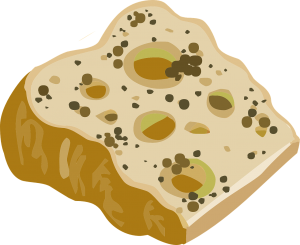
Some may cause allergic reactions or produce mycotoxins that can cause illness.
Molds can grow on various types of foods including fruits, vegetables, meats, condiments such as jams, jellies, pickles, etc. This can occur if food is left beyond the expiry date, or for extended periods of time, regardless of where it is stored (on the counter or fridge).
It’s wise to keep an eye on what you consume and check the date before eating, as molds can be hidden out of site within the food item.
Tips to minimize your risk include:
1) Inspect food you buy to ensure no mold is present.
2) Don’t leave refrigerated foods out for extended periods.
3) Keep an eye on expiration dates.
4) Keep kitchen surfaces clean using baking soda and water, and/or bleach cleaning solutions.
5) Likewise, clean your refrigerator periodically.
6) Clean and discard old dish towels, sponges or scrubbers periodically.
7) Keep house humidity levels low (below 40% if possible)
Preservatives
The addition of preservatives to our foods does have its benefits. Preservatives protect us from spoiled foods that in turn may hurt our wellbeing and they also extend the shelf life of products. However, preservatives are a double edged sword in that they do have consequences that can be harmful to us.
Some preservatives are more controversial then others. The more questionable include sulfites, sodium benzoate, nitrites, Butylated Hydroxyanisole (BHA) and Butylated Hydroxytolunene (BHT) and Propyl Gallate.
When it comes to your diet, most of these can be found in processed foods. All of these are chemicals used throughout the food production industry, and have been very controversial in recent years as to how they affect our health.
Bisphenol (BPA)
 Bisphenol A (BPA) is a common chemical used in the production of plastics and epoxy resins since 1957. In food production it has been used in products such as plastic bottles and as a lining for the inside of many types of food and beverage cans, including those used for feeding infants, along with many other industrial uses. In 2005 alone roughly 4 millions tonnes of BPA was produced, being one of the highest produced chemicals globally!
Bisphenol A (BPA) is a common chemical used in the production of plastics and epoxy resins since 1957. In food production it has been used in products such as plastic bottles and as a lining for the inside of many types of food and beverage cans, including those used for feeding infants, along with many other industrial uses. In 2005 alone roughly 4 millions tonnes of BPA was produced, being one of the highest produced chemicals globally!
BPA is a known toxic chemical that studies seem to show could contribute to a variety of possible health issues, including hormone imbalances, infertility problems, heart disease, hypertension, pre-diabetes, some forms of cancer and obesity.
The USDA and Health Canada have since banned the use of BPA in baby bottles and cups, however, it is still widely used in other products, and recent studies have found that 90% of people still have it in their blood, with exposure on the rise. This from a recent Canadian study, whose health authorities had officially declared BPA as “toxic” years ago. So exposure is not slowing down and efforts to remove it from our general food supply have had limited effect thus far.
Your best bet is to try to avoid exposure by limiting use of plastics that are in contact with your food whenever possible. This includes discontinuing the use of bottles or containers made of plastic to store foods and reducing or eliminating the purchase of canned goods whenever possible. Instead, opt for safer alternatives like glass, or fresh goods that do not contain these chemicals.
Butylated Hydroxyanisole (BHA) & Butylated Hydroxytoluene (BHT)
Both BHA and BHT are used as a food preservative in a very wide variety of products, including many fast foods, cereals, snack foods, cookies, drink mixes and even sausages and vegetable oil, to name a few. You can often spot them labeled on the ingredient list.
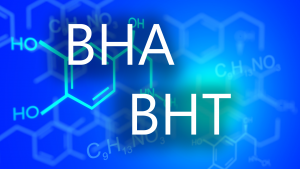 These chemicals are used mainly to prevent foods from becoming oxidized or rancid. While this is good, the downside and controversy surrounding their use is worth considering.
These chemicals are used mainly to prevent foods from becoming oxidized or rancid. While this is good, the downside and controversy surrounding their use is worth considering.
As an example, the International Agency for Research on Cancer, has classified BHA as a possible human carcinogen and long term animal studies have linked long term exposure to various types of cancer. Both are also linked to allergic reactions and other possible serious health issues.
In the USA, the FDA has cleared both for usage in foods and so far their is no official ban their use. At low doses they are believed to be safe to consume, however, it may be wise to be on the look out for them and avoid if possible.
Reducing Consumption Of These Toxins
 Preventing consuming the above toxins is relatively easy to do.
Preventing consuming the above toxins is relatively easy to do.
Overall you want to follow the same point we listed in the first part of this article.
Here they are again:
- Buy Organic
- Avoid GMOs
- Avoid farmed meats and fish
- Follow food safety health alerts
- Avoid foods known to have more toxins
- Reduce consumption of processed foods
Again, remember, one of the most important things you can do to reduce your exposure to toxins is to avoid eating processed foods!
By making your own food from scratch, you automatically reduce exposure to these toxins, by using fresh ingredients and reading the labels when buying them. The only way to do this truly effectively is to make your own food. Only then do you have total control of what goes in your body. Prepare your own meals and your health is in your control.
For help making easy to prepare delicious home-made meals please consider joining MealEasy today! You’ll cut your exposure to toxins, and help improve your family’s health overall.
Is Your Diet Full Of Deadly Toxins?
June 07 2018
One of the biggest factors to maintaining good health is ensuring you eat the right foods. While this is important, if you want to attain the best health, you must also consider toxins in your diet.
Even with our best intentions in trying to eat well, if you are consuming toxins, you’ll be compromising your overall wellness. And it’s almost certain you are consuming more toxins than you think! Most of us blindly have no idea where these deadly bad guys are hiding and as a result end up ingesting more toxins than we imagine.
Ok, so the subject isn’t the most pleasant to discuss, however, this critically important information will make you a more informed consumer at the grocery store and help you reduce your exposure, living a healthier life as a result!
What Kind Of Toxins Exist?
There are a variety of toxins that affect the general food supply.
Pesticides
These are perhaps one of the most worrisome offenders and are chemicals that get sprayed on produce products such as vegetables, fruits, grains, nuts and seeds. They also propagate up the food chain, as animals used for meat products routinely eat pesticide covered grains. There are a variety of different agricultural chemicals now used in order to maximize food production and profits.These chemicals are being used at alarmingly increasing amounts globally.
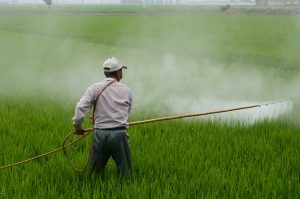 The most controversial and most heavily used is a chemical called glyphosate (commonly found in Monsanto’s Roundup weed killer) and used extensively in modern farming of crops. Over 1.6 billion kilograms of it have been applied to crops since 1974 in the USA alone! That’s an insane amount to say the least!
The most controversial and most heavily used is a chemical called glyphosate (commonly found in Monsanto’s Roundup weed killer) and used extensively in modern farming of crops. Over 1.6 billion kilograms of it have been applied to crops since 1974 in the USA alone! That’s an insane amount to say the least!
But that’s just the tip of the toxic iceberg…
Since the introduction of genetically modified “Roundup Ready” crops in 1996, these newly engineered crops have been designed to be glyphosate-tolerant; consequently leading to a 15 times increase in the total amount of glyphosate used! Ouch! Two-thirds of which were sprayed in the last 10 years, with the USA applying almost double per hectare of land verses the rest of the world.
Interestingly, 56% of global glyphosate use is being applied to to genetically modified crops.
Recent studies conducted by the University of California San Francisco found that 93% of people tested positive of glyphosate (~3 PPB in the USA, and 1 PPB level in Europe per person per day). Surprisingly, the effects of consuming these levels of exposure in humans have never been independently and conclusively studied by regulators or industry.
The safety studies on glyphosate and Roundup seem to have contradicting results with some of the most recent studies siting possible adverse health effects with more conclusive truly independent testing needed.
Regardless of the final future outcome of this chemical (and others), it’s safe to say you probably don’t want a known pesticide in your body, and your body was not designed to have it in it. So avoidance is just common sense prevention for optimal health.
Bacterial Infection From Food
There are a number of types of food borne health issues caused by bacteria that can be toxic if consumed. Bacterial food borne illness is the most common type of toxin that affects our wellbeing.
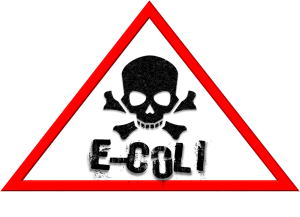 Over 90% of bacterial food poisoning comes from the following types of bacteria: bacillus cereus, campylobacter jejuni, clostridium perfringens, clostridium botulinum, enteropathogenic escherichia coli (e. coli), listeria, salmonella, staphylococcus aureus, vibrio parahaemolyticus, and yersinia enterocolitica.
Over 90% of bacterial food poisoning comes from the following types of bacteria: bacillus cereus, campylobacter jejuni, clostridium perfringens, clostridium botulinum, enteropathogenic escherichia coli (e. coli), listeria, salmonella, staphylococcus aureus, vibrio parahaemolyticus, and yersinia enterocolitica.
Some of these can be deadly and/or have a severe effect on our wellbeing and have to be taken seriously. In the USA alone, 24 to 81 million people are affected each year!
Being aware that they exist and taking preventative measures is a must. Most can be prevented by following the guideline set by the United States Department of Agriculture (USDA) including these four steps:
1) Clean: Wash your hands and cooking/preparation surfaces often.
2) Separate: Do not cross-contaminate.
3) Cook: Unsure food is cooked to proper temperature.
4) Chill: Promptly refrigerate your food.
Bacterial contamination can also occur during the food production or transportation process. To protect yourself from this possibility it’s wise to keep up to date on food safety bulletins.
In Canada, visit the Canadian Food Inspection Agency – Food Recall Warning page, where you can also sign up for food recall e-mail notifications to keep your family safe from high risk recalls you may not otherwise know about.
In the USA, visit the U.S. Food & Drug – Recalls, Market Withdrawals, & Safety Alert page. There is also an option to receive email notifications. Note that these alerts are for any type of safety issues including bacteria issues.
Heavy Metals
These are also common toxins that affect human health, including lead, mercury, aluminum, cadmium and arsenic.
While no amount of lead is considered “safe”, research by Environmental Defense Fund (EDF) found lead in 14% of food samples and 20% of baby food samples overall and even up to 40% of some types of baby foods! Recently studies by the EDF found that over 1 million children consume more lead than the FDA’s recommended limit.
Interestingly, a recent independent study also found that out 127 chocolate products tested, 96 contained either lead or cadmium above safe threshold levels!
 Mercury is another extremely toxic substance, with even small amounts of exposure being classified to possibly ‘“cause serious health problems” by the World Health Organization (WHO). Exposure mainly comes from seafood, including various types of fish, rice and high-fructose corn syrup.
Mercury is another extremely toxic substance, with even small amounts of exposure being classified to possibly ‘“cause serious health problems” by the World Health Organization (WHO). Exposure mainly comes from seafood, including various types of fish, rice and high-fructose corn syrup.
Larger fish typically have more mercury, with the highest levels found in tilefish, king mackerel, shark, swordfish, marlin, orange roughy, ahi and bigeye tuna. Other high fish sources include Spanish and gulf mackerel, albacore and yellowfin tuna, sea bass, bluefish and grouper. For more information on mercury levels in various types of fish, you may find this article helpful.
Aluminum has long been suspected of being linked to Alzheimer’s Disease, though studies have been inconclusive, with some showing no link, while other very recent studies showing a clear association.
Making up 8.2% of the earth’s surface, aluminum is found in abundance in nature; though it is likely not good to ingest too much of it. Common food sources with higher quantities include food additives, baking powder, processed cheeses, pickles (that contain “alum”), self rising flour, baby formula, coffee creamers, salt, processed foods and drugs such as antacids.
Cadmium is a highly toxic metal that is a known health hazard. The biggest source of cadmium in foods include organ meats such as liver and kidney. Surprisingly, cadmium is also found in cereal grains, leafy greens and root vegetables, which absorb it from the fertilizers applied to the soil they grow in. However, research seems to indicate that iron from these generally healthy food choices seem to counteract the absorption of cadmium in our body, and avoiding these healthful foods may do more harm them good.
Arsenic is another highly toxic heavy metal, found in contaminated sources in our food suppl. These included drinking water, crops irrigated with the contaminated water, or foods prepared with the contaminated water source. Globally, it’s the most significant drinking water contaminant. Researchers found the following foods contained the highest levels:
▶ Brussels sprouts (due to their sulfur content which attracts arsenic from contaminated soil)
▶ Rice
▶ Chicken and poultry (typically fed with feed treated with arsenic-based drugs – now thankfully starting to be banned by the FDA)
▶ Dark meat fish (such as bluefish, swordfish, tuna, mackerel, salmon and sardines)
▶ Beer and wine (with frequent drinkers having 20 to 30% more arsenic levels in their body)
Being aware and mindful of heavy metals and where they lurk can help you improve your health. At the very least, this information is worth remembering.
Other Toxins
There are many other types of toxins that affect our food supply, and the above are some of the ones to pay attention to first.
Stay tuned to our blog for our next post on other toxins in our food to be aware of. You may be surprised what you will learn!
How To Reduce Consumption Of These Toxins
 There are a number of ways you can reduce your exposure to the amount of toxins you consume.
There are a number of ways you can reduce your exposure to the amount of toxins you consume.
Here are a few methods that will help:
- Buy Organic
- Avoid GMOs
- Avoid farmed meats and fish
- Follow food safety health alerts
- Avoid foods known to have more toxins
- Reduce consumption of processed foods
The most important thing you can do to reduce your exposure to toxins automatically is to simply avoid processed foods! This will in general cut exposure overall.
Making your own food is the ONLY WAY to do this effectively and know for sure what you are putting in your body. Don’t rely on someone else to do it for you – your health is in your control – prepare your own meals.
For help making tested healthy home-made meals, consider joining MealEasy today! By making our easy to prepare delicious meals at home, you’ll automatically cut your use of toxins in your diet and be on a path to better long-term health.
Own Your Health, Control Your Destiny
April 04 2018
 Over the years, we as society have lost control of our health. We willfully handed over the keys to our own wellbeing to others, whether we realize it or not, we have done so and continue to do. Most of us live our entire life unknowingly programmed to think and act a certain way when it comes to decisions about our health and we are much sicker and die many years prematurely as a result.
Over the years, we as society have lost control of our health. We willfully handed over the keys to our own wellbeing to others, whether we realize it or not, we have done so and continue to do. Most of us live our entire life unknowingly programmed to think and act a certain way when it comes to decisions about our health and we are much sicker and die many years prematurely as a result.
You may be thinking this can’t be true and no one in their right mind would do so, but let’s dig deeper and see.
On the surface everything seems normal. We live our lives hardly taking a breath to consider the fact that much of what we do with regards to our health has been influenced by what someone else wants us to do.
Doctors Have Good Intentions
 Traditionally, when dealing with serious health issues our first line of defense is advice we receive from our doctors. Doctors are our mechanics that help fix us when our body is not working as it ideally should. They have good intentions and are there to help us in times of need, conducting much needed medical assessments, prescribing medications, directing us for further medical assistance, etc.
Traditionally, when dealing with serious health issues our first line of defense is advice we receive from our doctors. Doctors are our mechanics that help fix us when our body is not working as it ideally should. They have good intentions and are there to help us in times of need, conducting much needed medical assessments, prescribing medications, directing us for further medical assistance, etc.
However, the majority of doctors are not trained to address the underlying cause of most chronic health issues (including our most prominent issues such as heart disease, diabetes, cancer, etc.), nor do they have the required time and methods to deal with the the underlying cause.
Most have only a few short minutes to see each patient and send them on their way. As much as they’d like to, the medical system is not designed to offer the level of support needed to achieve optimal health.
In most health cases, there is MUCH more that can be done to address specific health issues (without the need for potentially dangerous medications, or invasive medical procedures, that in many cases are unnecessary). This is not to discredit doctors or their advice in any way; they do what they’ve been trained to, but that’s not necessarily the best outcome for you as a patient.
Industry Influence
 Each day we are bombarded with advertisements everywhere we look, including TV, web sites, emails, traditional mail, newspapers, magazines, billboards, radio ads, etc. Subconsciously we are progressively being influenced on what to buy, what to food to eat, what fast food restaurant to go to, what medicine to take, what pharmaceuticals and medical procedures we should ask our doctor about, etc. We are subconsciously being programmed to act and think a certain way, and much of what this leads to directly or indirectly influences our overall health.
Each day we are bombarded with advertisements everywhere we look, including TV, web sites, emails, traditional mail, newspapers, magazines, billboards, radio ads, etc. Subconsciously we are progressively being influenced on what to buy, what to food to eat, what fast food restaurant to go to, what medicine to take, what pharmaceuticals and medical procedures we should ask our doctor about, etc. We are subconsciously being programmed to act and think a certain way, and much of what this leads to directly or indirectly influences our overall health.
Behind the scenes, industry giants influence our law makers by lobbying and pressuring specific decisions. This includes influencing what foods you will eat. Food sectors such as the sugar, artificial sweeteners, GMO (investing $101 million in 2015 alone to stop labeling of GMO foods) and processed food giants can and do pressure governments and health/food administrations on guidelines distributed to the public on safe food consumption; regardless of if it is truly safe to consume. In the end, the consumer pays the price with poorer health as a result of following guidelines that aren’t designed for truly optimal health.
What You Do Matters Most
 Most of us likely already know that our own health is our own responsibility, but the majority of us aren’t really doing much at all about it. This is plainly evident in the obesity epidemic that is now totally out of control and related diseases that shorten our lifespans unnecessarily.
Most of us likely already know that our own health is our own responsibility, but the majority of us aren’t really doing much at all about it. This is plainly evident in the obesity epidemic that is now totally out of control and related diseases that shorten our lifespans unnecessarily.
This is a wake up call to all of us that something is terribly wrong and something needs to be done!
The solution is that we each need to start taking our own health seriously and stop relying on others to do it for us. We are not victims of what others tell us to do and can determine our own destiny by the actions (or inactions) we take each minute of each day.
Yes, the medical industry has a time and place in the equation for good health, but what we do on our own is the most important part!
Yes, media and industry will continue to influence us as to what to buy.
But the key thing to remember is:
We have a choice in how we react!
The Underlying Cause

The most prominent health issues are a result of our lifestyle.
Please read that last sentence again and let it sink in.
It’s what we do or don’t do each day that for the most part determine our destiny, and this is particularly true when it comes to our health. What you eat throughout the day is perhaps the single biggest influence on your health.
Want to take control of your future? Then start by making better decisions each day. It’s that simple.
Avoiding processed foods is perhaps the single biggest thing you can do to change the future of your health (and that of your family and future generations as a result).
The Right Track To Optimal Health
 Having read this article, the majority of us won’t change how we do things. The status quo is too ingrained in our lives and it’s purposefully easy for us to keep doing what we’ve always done, failing victim to influence that in the end severely harms our health. We as a society have essentially stopped thinking for ourselves.
Having read this article, the majority of us won’t change how we do things. The status quo is too ingrained in our lives and it’s purposefully easy for us to keep doing what we’ve always done, failing victim to influence that in the end severely harms our health. We as a society have essentially stopped thinking for ourselves.
But it doesn’t have to continue to be this way…
We can take back control of our own health and change our future. Here’s how.
When dealing with anything that relates to our health:
- Start thinking for ourselves
- Question what you are told
- ALWAYS do your own research
- Start using food as your medicine
- Have a plan and stick to it each day
These points are increasingly important as medical errors are the #3 cause of death in the USA!
It’s also now known that the most common chronic diseases are metabolic issues that can be addressed with lifestyle. Recent studies are now showing that these diseases are not primarily genetic and that what we do on a routine basis has a bigger impact then once thought.
For an easy way to get on a track to a healthier lifestyle, consider joining MealEasy today. It’s the reason we created it – to help you improve your health by helping you fix the underlying cause of poor health. Eat better, feel better with MealEasy.
Preventing Your Biggest Health Risk – Heart Disease
February 15 2018
 While January had many of us making resolutions to kick things off with a healthy start, February has traditionally been deemed “Heart Health Month”. Regardless of how this tradition started, it’s perhaps for good reason, since the health of your heart is one of the most important factors of maintaining good health and is often ignored until it’s too late.
While January had many of us making resolutions to kick things off with a healthy start, February has traditionally been deemed “Heart Health Month”. Regardless of how this tradition started, it’s perhaps for good reason, since the health of your heart is one of the most important factors of maintaining good health and is often ignored until it’s too late.
There are many reasons to make sure you are taking good care of your cardiovascular health. Some of the most sobering are shown in these alarming statistics.
Here Are The Facts
From the Centers For Disease Control and American Heart Association:
- Heart disease is the leading cause of death for both men and women
- 1 in 4 deaths is due to heart disease – every 40 seconds in the USA
- Only 54% of women recognize it’s the #1 killer
- Of those who die from heart disease, two-thirds (64%) of women and half of men die suddenly with no previous symptoms
- Only 54% have their high blood pressure under control.
- 9 out of 10 Americans eat too much sodium
Risk Factors
 According to research identifying the primary causes of heart attacks sponsored by the World Health Organization and World Heart Federation, the primary risk factors for heart disease are (in no particular order): abnormal cholesterol, diabetes, high blood pressure, stress, smoking, abdominal obesity, inactive lifestyle, alcohol abstinence and not consuming enough fruits and vegetables.
According to research identifying the primary causes of heart attacks sponsored by the World Health Organization and World Heart Federation, the primary risk factors for heart disease are (in no particular order): abnormal cholesterol, diabetes, high blood pressure, stress, smoking, abdominal obesity, inactive lifestyle, alcohol abstinence and not consuming enough fruits and vegetables.
Take a second look at the risk factors listed above. What stands out as the common link? In one word: Diet!
Yes, abnormal cholesterol, high blood pressure, obesity and lack of fruits and vegetables are all linked to a poor diet as a primary cause. Therefore, the most powerful thing you can do as an individual to avoid and reduce your risk of heart disease, is to take a closer look at what you are consuming on a daily basis!
The REAL underlying cause of heart disease is the food choices that we make each day.
The Ultimate Way To Treat And Prevent
Why is diet so important? The reason is that what you put in your body is closely associated with how your cardiovascular system works. Certain foods harm it, while others help repair and improve it. Consume too much of the bad foods, and not enough of the good and your heart health will be negatively impacted. The good news is that detrimental effects can to a great extent be reversed and/or improved by making smarter food choices.
In a nut shell, you’ll want to eat more unsaturated fats, ensure you are eating nutrient rich healthy foods, include foods with fiber content, eat calcium and high quality protein rich foods. And eat less processed foods, along with reducing consumption of foods that contain trans fats, saturated fats, salt and sugar.
▶ For help getting started please see our informative article on exactly what to eat.
Amazingly, by simply changing what you eat, you can make the biggest impact on your heart health and anyone can start today without delay. You’ll avoid and/or reduce your risk of becoming one of the unfortunate and completely unnecessary statistics. All it takes is a choice you make and then follow with each bit you take every day.
For the easiest way to help ensure your heart gets the attention it deserves, consider signing up for our Heart Healthy Meal Plan. MealEasy® was created to help anyone eat healthier without any guesswork, showing you precisely what to eat and providing a plan to ensure absolute success. The Heart Healthy plan follows recognized dietary guidelines to achieve better cardiovascular health for anyone who follows it. Try it today and you heart will love you for it!




